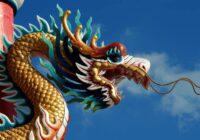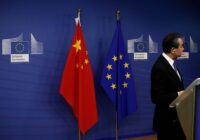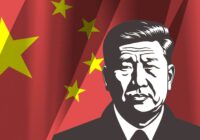As aspiring global powers, both Russia and China are trying to upgrade their roles on the global stage and carve out their respective spheres of influence.
On September 11, Russia launched one of the largest military exercises since 1981. Vostok 2018 (East 2018) took place in the Far East of Russia and on the Pacific Ocean. The drill involved 300,000 Russian servicemen, including 6,000 airborne troops, thousands of planes, drones and helicopters, 36,000 tanks, armored personnel carriers and other defense vehicles, plus around 80 ships and support vessels. Beyond the gigantic deployment of manpower and the massive naval build-up by the Russian Federation, China also took part, sending 3,200 troops and 900 armored vehicles, plus a Mongolian mechanized infantry battalion.
Officially, Vostok 2018 was aimed to achieve several objectives, from checking combat readiness to deploying troops over long distances to testing and ameliorating command-and-control procedures, going through the enhancement of interoperability under a single command. But how should we interpret the impressive size of Russia’s mobilization and China’s participation?
Regarding the size of Russia’s mobilization, Frants Klintsevich, first deputy chairman of the Defense and Security Committee of the Russian Federation’s Council, publicly stated that Vostok 2018 was meant “to cool down some hotheads.” In other words, the drills would be a response to “the unprecedented pressure that the US is exerting on Russia.” Klintsevich referred to the financial sanctions levied against Russia and the massive expansion that the United States is planning for its Air Force and Navy to keep Russia and China in check. Notably, during the exercise, the two teams competed against each other to simulate a conventional interstate war, as opposed to fighting an imaginary opponent.
That Vostok 2018 took place far from NATO’s borders is relatively unimportant. What matters is that this demonstration of military might has been noticed by NATO, which now knows that Russia is ready for a full-scale conflict. Russia’s 2014 annexation of Crimea and the war of attrition in eastern Ukraine, led by Russian-backed separatists and non-attributable hybrid forces, have heightened tensions with NATO. Plus, the memory of the 2008 five-day war between Georgia and the Russia-backed separatists in South Ossetia and Abkhazia is still vivid.
Simply put, with Vostok 2018 Russia is flexing its muscles, showcasing to both friends and foes its ability to manage logistics and command-and-control structures while conducting large-scale military operations at a high degree of coordination between land, sea and air forces.
Show of Strength
This show of strength was aimed first at the international public opinion, in a moment where changes in the balance of power on the global stage — namely, the neo-isolationist grand strategy of the Trump administration — would have increased the relative power of Moscow with regard to a perceived decline of the US-led liberal order. Think of the massive Russia military build-up in Syria to shore up Bashar al-Assad and help his regime to reverse the course of the Syrian Civil War.
In the face of a perceived Western reluctance to step in to stop the bloodbath, Putin doubled down and escalated the war. Indeed, Russia’s military role in Syria, still ongoing, consisted in a massive bombing campaign aimed at fighting ISIS. However, as many reports have signaled, Russian airstrikes have reduced many highly-populated urban areas to rubble, with the use of cluster munitions and thermobaric bombs targeting hospitals, mosques and water plants, which resulted in a high death toll among civilians. Putin’s campaign was instead meant to a two-pronged strategy: to wipe out American-backed rebels in order to rescue long-term Kremlin protégé Assad and to reposition Russia as an irreplaceable partner for resolving the conflict in Syria.
Vostok 2018 testifies that we are going to witness an increasing economic, diplomatic, geopolitical and military alignment between Russia and China, at least as long as the two are united by a shared rivalry with the United States.
This demonstration of strength is embedded within a strategic thinking rooted and socialized in Russia’s strategic culture. Back in 1977, in a report for the US Air Force, Jack L. Snyder contended that, in case of what was then the Soviet Union, the geographical uniqueness (sheer vastness of territory to defend, lengthy borders), political (non-liberal, autocratic system) and economic variables (a rentier-economy linked to the exploitation of natural resources) would reflect the uniqueness of unilateral military and strategic solutions compared to traditional and more cooperative and flexible Westernized doctrines. With regard to this, brinkmanship, escalation dominance and the tactic of outsmarting and deceiving one’s opponents, such as massive information warfare campaigns, still remain in the playbook of Russian foreign policy.
As it often happens with Russia, military operations also speak to domestic public opinion. Indeed, Russia’s economy has been struggling to recover from a decline in investor confidence between 2015 and 2016. Besides low levels of economic diversification and thus low resilience to shocks, hard-hitting sanctions and high volatility of commodity prices took their toll on the Russian economy. In addition, a massive sell-off of the ruble has recently depreciated the currency, with inflation expected to increase.
Thus, in the wake of the recent protests caused by the sluggish economy and the raising of retirement age, Russia’s leadership needs to demonstrate that the extensive — and expensive — military modernization of the last years delivered some tangible results.
Enter China
Regarding China’s participation, simply stating that Vostok 2018 aimed at reducing China’s and Russia’s diplomatic isolation would be a euphemism. Rather, it demonstrates the steady strengthening of the Sino-Russian bilateral relationship. In accordance with the narrative used on previous occasions, Chinese officials even referred to the joint drills as evidence of a “strategic partnership” between the two countries. Although this is more a diplomatic statement than an analytical account of the state of bilateral affairs, the economic and geopolitical trajectories of Russia and China are converging, and Vostok 2018 is both a symptom of this trend and a way of invigorating it.
Put simply, Russia and China chose to temporarily set their conflicting interests apart to handle a greater challenge: the United States. With Vostok 2018 and the decision to jointly develop new military technologies, Russia and China are signaling to each other and their competitors that, at least in the medium term, they will remain politically aligned and keep supporting each other on regional and global issues.
As for the economic momentum, China’s outlook is much better than Russia’s. However, the two countries are still interdependent. On the one hand, China desperately needs Russian oil and gas. On the other, Russia needs the revenues originated by the export of its raw materials. In 2014, the two countries concluded a 30-year gas deal worth roughly $400 billion. In addition, bilateral trade flows across their shared border have increased by seven times since 2002.
While China inches closer to Russia, Beijing is at odds with the US as the two countries are locked in a trade war the consequences of which could spark a ripple effect on the global economy. The Trump White House is accusing China of unfair practices such as industrial espionage, intellectual property theft and unfair competition resulting from adopting a dumping pricing policy and currency manipulation. A trade war could end up making China worse off. Indeed, in its attempt to fix macroeconomic imbalances, such as an unchecked credit-fueled growth and consequent high corporate leverage ratio, the rise of US-China tensions might hold back investors and affect growth. In this sense, both Russia and China see sanctions and tariffs as the demonstration that the US-led free-trade regime operates on a logic of coercion where reluctant states are bullied into line by threat of exclusion from trade, credit and key political forums.
Nevertheless, as aspiring global powers, both Russia and China are trying to upgrade their roles on the global stage and carve out their respective spheres of influence, in the post-Soviet space and in the South China Sea. Although their aspirations clash with America’s model of a liberal international order, Russia and China propose the paradigm that is better suited to their national interests. As long as their territorial ambitions do not overlap, the two countries will support each other’s foreign policies and visions of the international order.
It must be noted that the participation of China in the Vostok 2018 drills does not necessarily mean that Russia and China will form a military alliance or develop a proper strategic partnership as a series of unsolved frictions still undermine mutual trust. First, Russia is exporting weapons to Vietnam, which is at odds with China over its South China Sea policy, and to India, one of China’s greatest regional competitors. Second, both Russia and China recently implemented massive programs of military modernization and are willing to expand their clout. Third, Russia’s economy is dwarfed by China’s, and far from gaining steam. From this perspective, Russia might have invited China to Vostok 2018 in order to mitigate the concerns caused by troop build-up along the Chinese border and to promote mutual trust amongst allies.
Vostok 2018 testifies that we are going to witness an increasing economic, diplomatic, geopolitical and military alignment between Russia and China, at least as long as the two are united by a shared rivalry with the United States.
The views expressed in this article are the author’s own and do not necessarily reflect Fair Observer’s editorial policy.
Support Fair Observer
We rely on your support for our independence, diversity and quality.
For more than 10 years, Fair Observer has been free, fair and independent. No billionaire owns us, no advertisers control us. We are a reader-supported nonprofit. Unlike many other publications, we keep our content free for readers regardless of where they live or whether they can afford to pay. We have no paywalls and no ads.
In the post-truth era of fake news, echo chambers and filter bubbles, we publish a plurality of perspectives from around the world. Anyone can publish with us, but everyone goes through a rigorous editorial process. So, you get fact-checked, well-reasoned content instead of noise.
We publish 2,500+ voices from 90+ countries. We also conduct education and training programs
on subjects ranging from digital media and journalism to writing and critical thinking. This
doesn’t come cheap. Servers, editors, trainers and web developers cost
money.
Please consider supporting us on a regular basis as a recurring donor or a
sustaining member.
Will you support FO’s journalism?
We rely on your support for our independence, diversity and quality.






